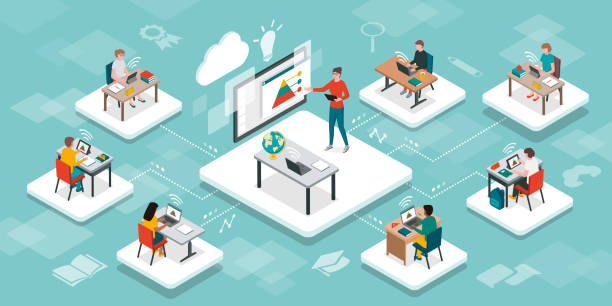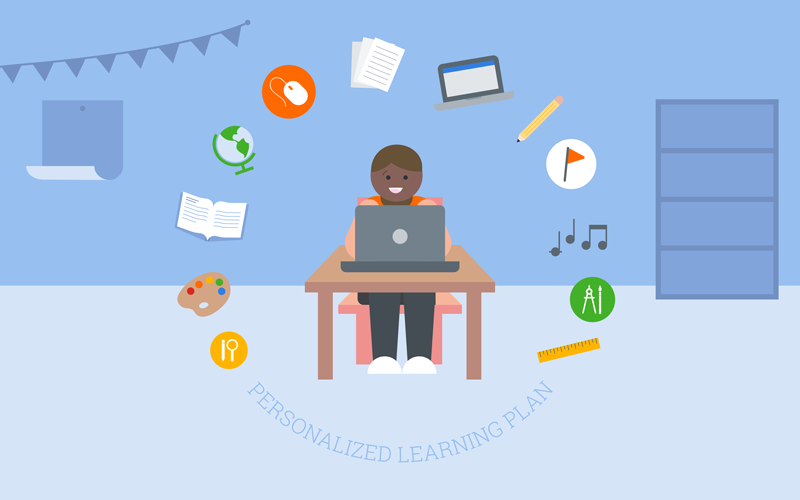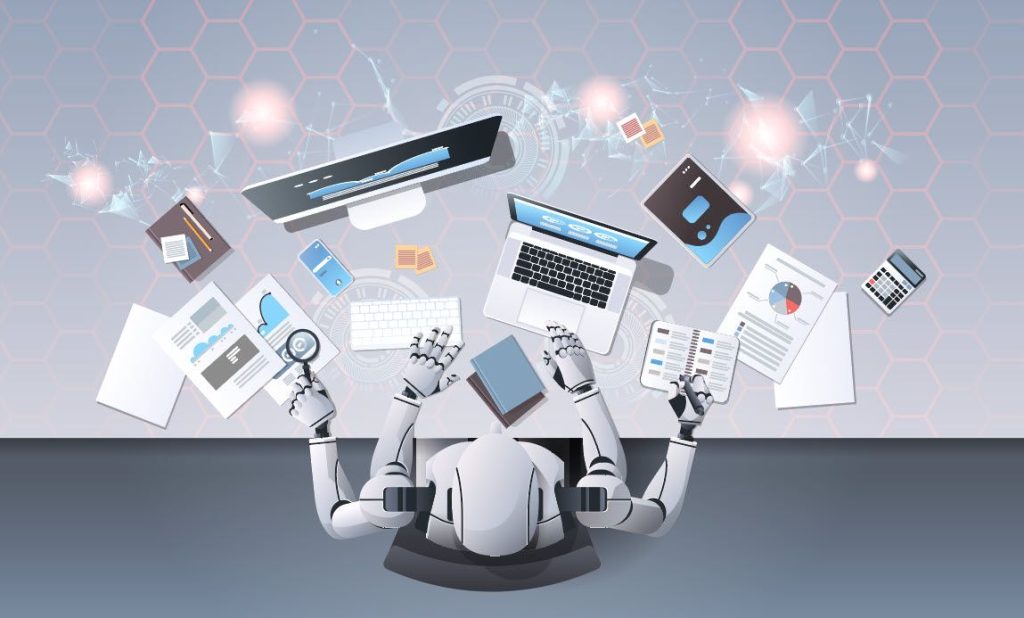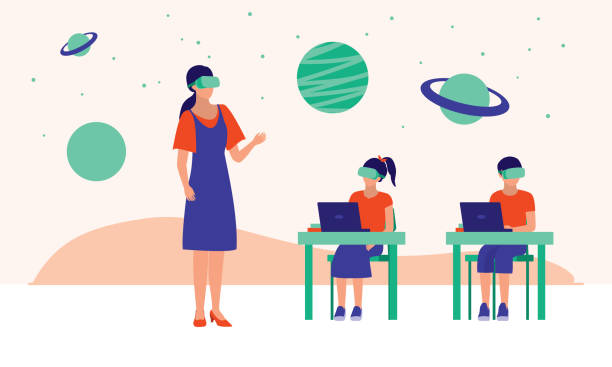
Dutch schools are facing an increasingly critical situation as the shortage of teachers continues to rise, with one in ten primary school positions currently unfilled. With a need of 9,700 full-time teachers, an increase of 600 compared to the previous year, the situation is particularly worsened in the biggest four cities in the Netherlands. But what if there was a solution that could help ease the burden? This is where AI-based technologies come in – the capabilities of technology to serve diverse roles in education. By offering personalized learning experiences, automating routine tasks, and making learning more engaging and fun, AI-based technologies can be valuable for education, regardless of the lack of teachers. Is this the solution to the ongoing teacher shortage crisis? Let’s explore the possibilities.
AI’s Personal Touch to Education

First of all, AI-powered applications can provide insight into a student’s performance in school. There exist intelligent teaching programs that use data from individual students to provide them with personalized feedback and interact directly with them. Also, several providers offer software that helps teachers evaluate their students’ skills, group students based on their learning needs, and provide customized lesson plans, resources, and assignments for each group. Personalized learning enhances student performance and help students improve their achievements. Therefore, it is important that the one-size-fits-all approach to compulsory education changes, allowing students to benefit from personalized learning experiences. Due to the limiting factors of personalized learning in traditional education, such as teacher availability and time allocation, the application of AI technology offers a potential solution.

One of the most successful language applications, DuoLingo, analyzes personalized performance data to decide which exercises to give to the student. Such applications also exist in education. DreamBox is a personalized mathematics program that assesses students’ skills through various interactive activities and adjusts content accordingly. Elementary school students who used DreamBox Math showed improvement in their Measure of Academic Progress (MAP) Growth assessment results, especially for those who completed an average of 5 or more lessons per week. Additionally, learning mathematics with DreamBox increases student motivation, excitement, and engagement.
Another example of an AI-powered virtual platform that is used in education is Squirrel AI. Squirrel AI is an adaptive learning platform that offers a custom-fit education experience for students. The platform’s algorithms assess each student’s learning pace, skills, knowledge, and performance to create a unique study plan. The study plan consists of types of problems to practice, topics to focus on, and how students should plan their tasks. Throughout the learning process, Squirrel AI continuously monitors progress and adjusts the plan as necessary, ensuring that the student is challenged but not overwhelmed. Studies showed that students using Squirrel AI Learning outperformed students in classes taught by teachers only, indicating that the system effectively accommodates individual students’ levels of knowledge and learning needs. In our opinion, we do not believe that students should solely rely on these technologies in education as teacher-student interaction is important as well. However, as a supplement to regular lessons or for subjects where students require additional assistance, Squirrel AI can provide a solution. Therefore, AI-powered virtual platforms are more of a supplement to education rather than a replacement for all physical classes.
Balancing Efficiency and Engagement

The second reason why AI is useful in education is that it can help teachers grade assignments, provide feedback, and save time on administrative tasks. Teachers are facing increasing pressure due to increasing workload, student needs, and administrative tasks, which are causing burnout and high attrition rates. Therefore, it is important that teachers are using their time efficiently. A study by McKinsey Global Institute showed that only 49% of a teacher’s working hours is in direct interaction with students (see Figure 1). For this reason, the authors suggest that 20-40% of current teacher hours could be automated, so that more time is left for activities that lead to higher student outcomes and teacher satisfaction. Technology can help teachers but it can never replace them, as building positive relationships cannot be automated.

In addition to AI-based technologies making the work for teachers more efficient, it also improves students’ efficiency. For example, ChatGPT can save a lot of time by quickly answering questions, being always available, and providing clear explanations about certain topics. However, a note of caution is that it should only be used as an addition and not as a replacement for their own thinking. If students use ChatGPT intensively for homework assignments, they will not learn to think critically, apply their own knowledge, and use their creativity. In addition, it can provide incorrect information and students will become less engaged in education and they are eventually becoming less motivated. In conclusion, ChatGPT can be used as a tool to answer short questions which can save a lot of time, but it should not be a replacement for students’ own critical thinking, creativity, and research skills.
The Power of AI-Driven Virtual Reality & Gamification
Finally, another advantage of AI in education is empowering new learning methods. Nowadays, technology already plays a significant role in facilitating education, providing simulations that increase accessibility, enabling millions of individuals to access standard forms of education for a range of purposes. These simulations can also be designed as games, enhancing the learning experience by incorporating elements of fun. As noted by Gee, games provide an ideal platform for students to develop and practice their problem-solving skills.
The reason why games enhance the learning experience is the fact that games provide players with a goal prior to presenting questions or challenges, in comparison to traditional teaching methods. As a result, students tend to internalize problems and their solutions more effectively. This ultimately leads to a more efficient way of effort towards problem-solving.
Another key element of games is the opponent presenting challenges, and this is where AI can enhance the gaming experience. With AI and data-driven solutions, the needs of individual students can be taken into account more effectively, as previously discussed. Additionally, in the context of games, this personalization can be used to create unique scenarios and suggestions tailored to each student during gameplay, thereby maximizing the benefits of gamification.

The integration of virtual reality (VR) and AI in education can enhance students’ experiences and allow for practical application of life skills. In particular, VR can provide a platform for simulation and gamification of real-world scenarios, while AI improves experience in terms of creating the reality which dynamically adjusts by the user’s activities. It is called an immersive training system which is based on scenarios that are connected to each other. This approach has already been implemented in educational games in schools. The use of AI in these simulations can continuously improve the scenarios, learning from the student’s interactions and providing a more personalized and efficient learning experience. By integrating this system into games and simulations based on virtual reality, students can practice various aspects of daily life, such as appropriate behavior in traffic as pedestrians or in other public situations. With the incorporation of AI, these scenarios can become more dynamic and adaptive, as the system learns and adjusts based on the students’ actions, allowing for the creation of new, more effective scenarios that continually improve with each use.
Addressing Student-Teacher Interaction and Privacy Concerns
The integration of AI in education also has some concerns. One of the concerns is its potential to limit interaction between students and teachers. Even in online education, the use of AI can result in reduced interaction between students and teachers compared to traditional education methods. This is due to AI’s ability to mimic various activities usually carried out by a teacher, which may cause unease among individuals regarding the impact AI may have on teacher-student interaction. However, this issue can be mitigated by limiting AI’s involvement in certain areas of education.
Another concern is related to privacy, as AI relies heavily on data collection. This has raised concerns among students regarding the collection of their personal information. There are established guidelines, such as those set by the European Commission, that govern the use of AI in education. So, when ethical data collection practices are followed, data breaches or unethical use of sensitive information is less likely.
Conclusion
In conclusion, there is a significant shortage of teachers and this problem is only expected to worsen over time. In addressing this issue, AI can be considered as a viable solution due to its efficiency and innovative approaches. AI can provide valuable insights into student data, thereby enhancing the quality of education. By reducing the workload of teachers through automating repetitive tasks such as grading, feedback, and administrative work, AI can alleviate the effects of the teacher shortage. Furthermore, the integration of AI in education leads to new and innovative learning and teaching methods, such as virtual reality and game-based simulations that adapt and improve with each use. Based on these benefits, this article supports the implementation of AI as a supplement to traditional education.


